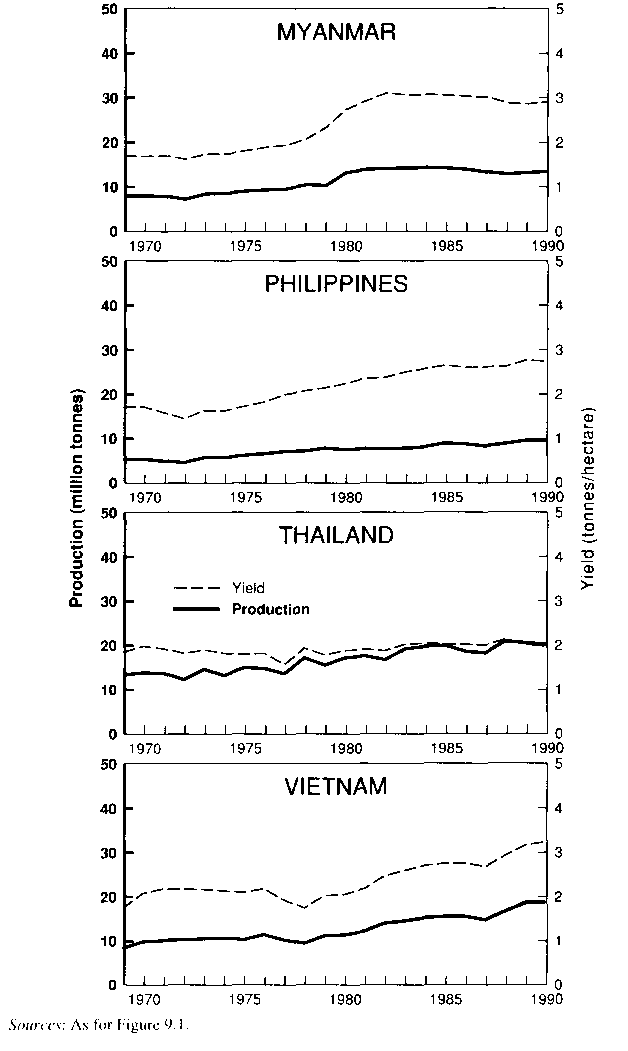The Malaysian Rice Company That’s Poised for Steady Growth
Post on: 16 Июль, 2015 No Comment

- April 6, 2012
- SHARE THIS
Even before the Mongol hordes of Genghis Khan breached the Great Wall of China in the 13th century, rice was a commodity of paramount importance to Asia.
Nothing has changed all these centuries later. Well, actually, one thing has changed the political importance governments now tie to rice.
Just as many countries today stockpile oil as an insurance strategy to protect themselves during times of war and crisis, numerous developing-market countries, particularly across Asia, have their own government-mandated emergency rice reserves.
[adcode]
Rice is, after all, not only the staple diet for the region, it’s a commodity that’s prone to political manipulation. The moment a global upset impacts rice supplies whether it’s a poor harvest, a natural disaster or even man-made calamities such as war panic drives rice prices up. And governments in many developing-nation, rice-producing countries respond by clamping off exports to keep local prices contained.
Of course, that only serves to worsen the crisis elsewhere since the decreased supply pushes prices even higher. That’s exactly what happened during the Great Commodity Boom of 2007-08, a period that saw rice prices nearly triple in short order, leading to food riots form Southeast Asia to North Africa.
That suddenly made rice a matter of national security and an opportunity for investors who realize the populations are growing in the world’s biggest rice-consuming nations.
Empty Bellies are the Instigators of Revolution
The world is not short on rice. There’s plenty to go around. The big challenge is that many countries measure themselves according to their ability to self-sufficiently feed their people. And that’s where the supply/demand picture with rice breaks down.
Less than 10% of the world’s rice crop actually trades freely in the international commodity market. The rest remains locked up in their countries where it was grown, stored in vast warehouses in the event of a national, regional or global emergency that disrupts rice supplies. If all that rice traded globally, you could probably feed the world.
But governments refuse to allow that. They know that empty bellies are the instigators of revolution. And the way to combat that is to ensure that enough supply of rice is quickly available inside the country.
Last October, in fact, 13 Asian countries including China, Japan, South Korea and Thailand, the world’s largest rice producer signed a pact that enhances cooperation on food security through an existing regional rice-stockpiling system known as the Ashawn Plus Three Emergency Rice Reserve. Through the pact, the nations are stashing away nearly 800,000 tons of rice in the event rice supplies are destabilized for whatever reason.
While it’s easy for countries to stockpile rice, it’s not so easy for the rest of us. And there’s no easy way to trade rice. While it is a commodity you’ll find listed in the commodity-futures market, the reality is that rice contracts basically trade by appointment, meaning there’s simply very few contracts that trade.
To build exposure to the rice market means that you have to own stock in a company active in the rice industry.
The Only Company Allowed to Import Rice
The rice company with the most-unique business model is a Malaysian rice giant known as Padiberas Nasional Berhad, or Bernas (Kuala Lumpur: BERNAS) .
Bernas is Malaysia’s rice leader, currently controlling about 24% of the local rice paddy and 45% of Malaysian rice demand. It’s involved in everything from seeding and farming, to buying and processing the rice that Malaysian farmers produce, to warehousing and marketing rice in Malaysia.

But perhaps the most-interesting aspect of Bernas is that it owns a government-mandated monopoly.
Bernas is the only company in the country allowed to import rice into Malaysia and Malaysia is a country that only produces about 30% of its rice demand. That gives Bernas huge advantages, particularly because of one fact Malaysians think imported rice is of better quality. And for Bernas, imported rice carries bigger profit margins.
In keeping with the rice-as-national-security theme, Bernas, in return for the import monopoly, must maintain Malaysia’s strategic rice reserve and must buy rice from local farmers at certain price levels. But that’s a small tradeoff to be given such a lucrative advantage.
Involved in Every Aspect of the Rice Industry
More important to us as investors, Bernas’ advantaged position provides for great stability.
Revenues have grown consistently at an average annual rate of nearly 11% for each of the last five years. Net income has grown consistently at 5% a year.
It’s certainly not a fast-growth stock, but it is a stable-growth stock that plays to one of the most secure trends in the world demand for rice. That demand grows at an annual pace slightly faster than population growth, the result of an emerging middle class that has more money to spend on more food. Malaysia’s population is growing by about 2% a year, and rice demand is growing by between 3.5% and 4% annually adding to Bernas’ stability.
Best of all, Bernas is a dividend juggernaut. Though the company’s dividend changes with profitability, it’s most recent yield is in the 10% range.
At a time when U.S. interest rates are stuck near 0% and will remain at that depressed level for several more years, Bernas represents the kind of high-quality, high-yield stock that’s perfect for investors who want exposure to unique food commodities like rice that are otherwise a challenge to play here at home.
Until next time, stay sovereign
Jeff D. Opdyke
P.S. The growing middle class population throughout Asia is going to provide a steady increase in the demand for rice. Bernas is well positioned to fill this demand, and they will profit because of it. They aren’t the only company poised to tap into this booming growth, however.For my Emerging Market Strategist subscribers, I research where I think the next big “Micro Booms” are going to hit, and what companies will benefit from them. Right now, I’m offering new subscribers a chance to try out my research for only $1. Don’t miss your chance – click here to check out my latest special report for only a buck.














